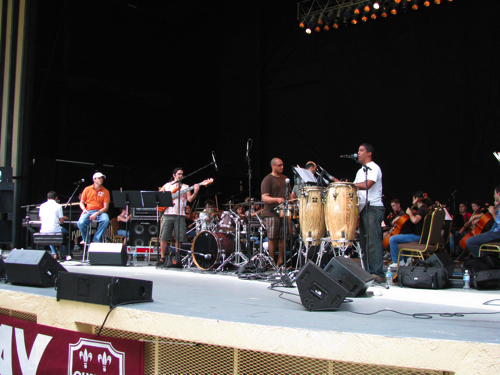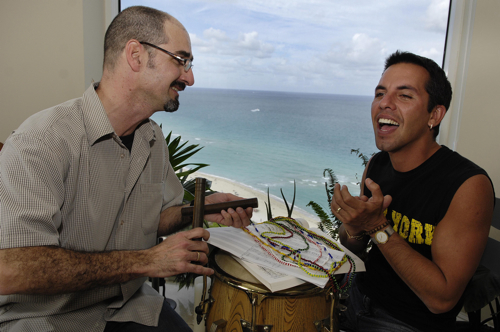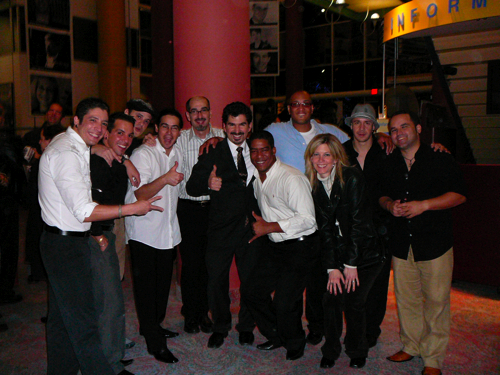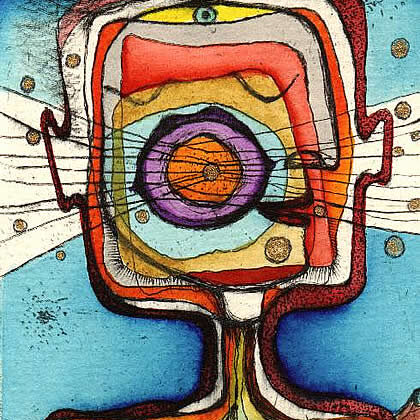Rumba Sinfónica
Cuban music ensemble meets the symphony orchestra
Program notes by Ricardo Lorenz
Genesis of Rumba Sinfónica
Before there was Castro, and way before there was Chávez, Cuba and Venezuela were joined together by the fantastic music of Orquesta Aragón, Son Matancera, Ignacio Piñeiro, Miguel Matamoros, etc. Like my parents, I grew up in my native Venezuela listening to Cuban music. That is to say that in my neck of the woods Cuban music is universal music, as universal as the music by Beethoven, Mozart, Tchaikovsky and so many other composers I studied at the conservatory. No surprise that since my days as a composition student I imagined bringing these two seemingly distant traditions together in an original work that would have the narrative quality and wide emotional range of classical music and at the same time possess the rhythmic intricacy and streetwise soulfulness of Cuban popular music. Rumba Sinfónica is such a work.
Watch MSUToday Presents Rumba Sinfónica on Youtube
But Rumba Sinfónica came about only after years of hammering away fusions between classical and popular music —including five years doing this as composer in residency of the Armonia Musicians Residency Program of the Chicago Symphony Orchestra— and only after the right team came together. It was in 2005 while teaching at Indiana University that I met Cuban pianist, composer and arranger Jorge Gómez, leader of the Grammy nominated, Miami-based band Tiempo Libre. He came to Bloomington with Elizabeth Sobol, the band’s manager who also happens to be the manager of classical musicians like Joshua Bell, Itzhak Perlman and James Galway. The vibes immediately started flowing. I saw in Jorge an incredibly versatile musician who, having been schooled in a classical conservatory as well as in the streets and clubs of Havana, is capable of going back and forth with ease between classical and popular music. The idea of collaborating to create a type of concerto grosso featuring Tiempo Libre and a symphony orchestra swept Jorge and Elizabeth’s imaginations as much as it did mine. So the project got off the ground a year later during a visit by the band to Michigan State University, where I currently teach.

During the months that followed I worked with Jorge shaping my ideas so as to fit them to Tiempo Libre’s particular style of Cuban music (known as timba) while Elizabeth worked the classical music circles looking for partners opened minded enough to bet on an adventurous project, eventually bringing on board major league co-commissioners such as The Minnesota Orchestra, Detroit Symphony, Festival of the Arts Boca and the Ravinia Festival. With Jorge’s collaboration, the theme in rumba style I had composed was transformed into a 26-minute symphonic drama. Jorge brought me into his universe by helping to shape the rumba melody until it achieved its current pearl-like beauty and by helping to translate a lot of the original material into today’s contemporary popular Cuban music, contributing tight and soulful rhythm section arrangements. Thus, out of this very special artistic collaboration, Rumba Sinfónica was born.
Cuban Rumba
Rumba is the primordial musical and dance expression of Cuba. The word rumba comes from a Spanish word for party. Speaking strictly in musical terms, it is a marriage between hypnotic rhythmic intricacy and almost profound melodic plaintiveness. Its streetwise sensuousness has given birth to many styles of Cuban popular music and has transcended its place of origin, spilling over to other musical genres, including jazz and classical music. But while examples of rumba-infused music are successful in many ways, most are unsuccessful at preserving the original spirit and actual features of their progenitor, to the point in which rumba is no longer recognizable.

Rumba Sinfónica makes a bold statement by allowing Cuban rumba to not only infuse a symphonic work but to also guide its musical content from beginning to end without ever losing its basic features: rhythmic intricacy and melodic plaintiveness. At the same time, Rumba Sinfónica seeks to stay true to the breath of the symphonic repertoire. The challenge and innovative aspect of this project, therefore, is to have these two very different, long-standing traditions come together and join forces at an equal footing.
Musical Drama behind Rumba Sinfónica
Rumba Sinfónica opens with an orchestral overture that evokes fragments of a plaintive rumba melody. Broad and at times rhythmical gestures are heard suggesting the notes of a rumba melody. However, the actual melody surfaces only after the band jumps in and provides the missing piece, the backbone of rumba and Cuban music: a rhythmical pattern known as clave. Driven by this rhythm, singing ensues and the actual rumba theme of Rumba Sinfónica is finally heard in a soulful, street-like fashion.
Taking its cue from the band, and this time supported by the clave rhythm, the orchestra proceeds to paraphrase the rumba theme in a lusciously orchestrated crescendo that breaks into an energetic jam session. Reality sets in, however, and the jam session is interrupted abruptly by a percussion riff playing the part of an ancestral call: a call to acknowledge the full reach and breath of rumba’s legacy, a legacy that extends back in time to pre-slavery West Africa and to present day Havana, New York or Miami. The work then launches into a series of variations of the rumba theme that succeed each other as though they are competing for recognition as the only true inheritor of rumba’s legacy. First a variation in danzón style, then cha-cha-chá style, followed by afro and later son montuno.

Along the way elaborations of the ancestral percussion riff persist. These get more intense as they signal the beginning and end of each variation. Finally the built up tension is released. The match ends in stalemate and the rumba theme returns triumphantly driving the work to a celebratory, upbeat timba-style finale that includes a chorus singing something like “get into the rumba groove or you’ll miss it before it’s over.”
In the spirit of Rumba Sinfónica, Jorge Gómez and Elizabeth Sobol join me in inviting you to get into the rumba groove, enjoy another result from the continuing evolution of Cuban music and reflect upon the natural interplay and porous borders between the classical and popular music traditions.
